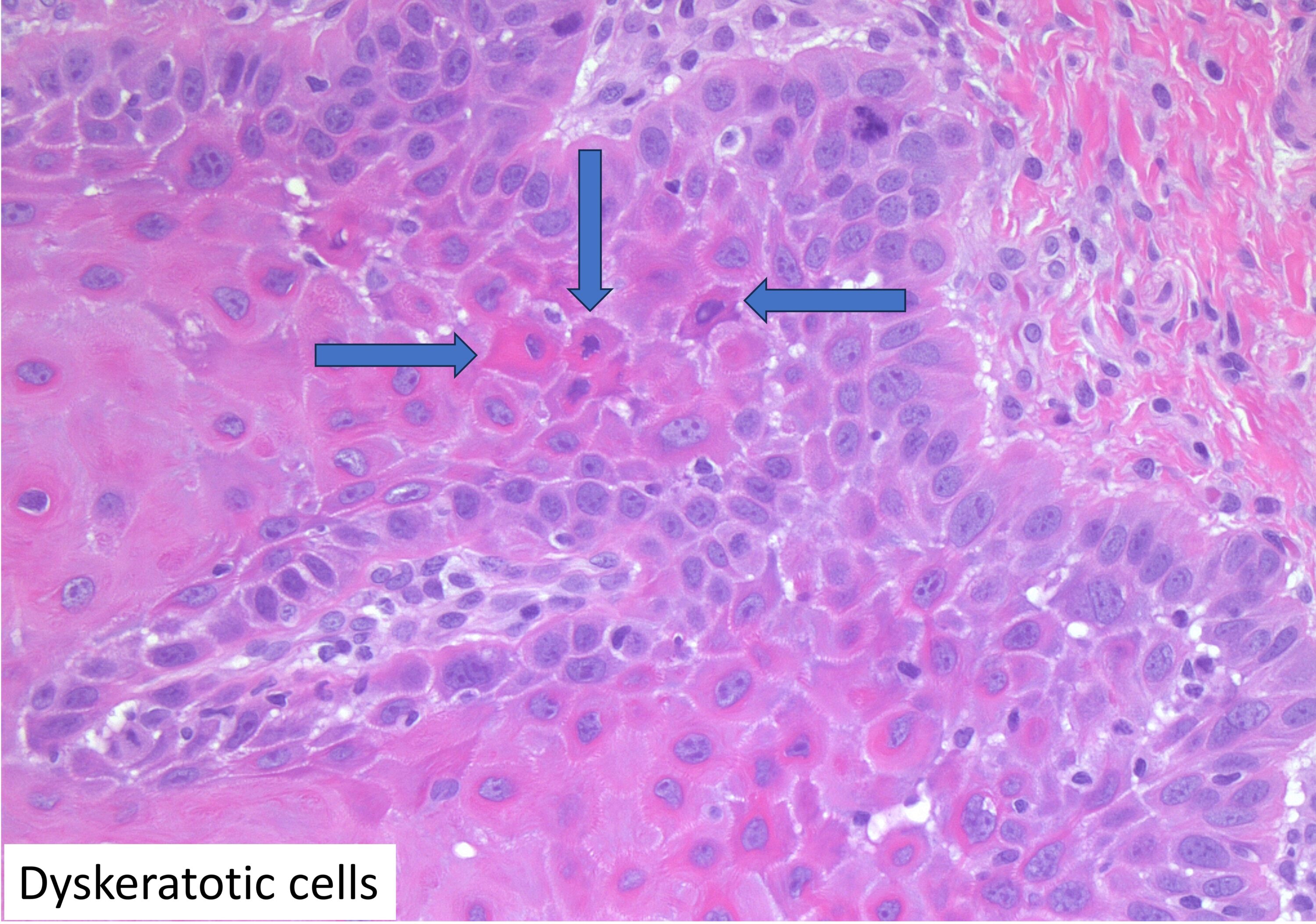MyPathologyReport
December 12, 2023
Dyskeratotic cells are squamous cells that have undergone premature or abnormal keratinization, a process by which cells produce and accumulate a protein called keratin. Under microscopic examination, these cells are smaller and pinker than normal squamous cells. Dyskeratotic cells can be seen in a variety of precancerous, cancerous, infectious, and inflammatory conditions.

What conditions are associated with dyskeratotic cells?
Conditions commonly associated with dyskeratotic cells include:
- Actinic keratosis (AK): Actinic keratosis is a precancerous skin condition caused by long-term sun exposure. Dyskeratotic cells may be present in the affected skin, and if left untreated, actinic keratosis can progress to squamous cell carcinoma.
- Bowen’s Disease: Bowen’s disease or squamous cell carcinoma in situ is an early form of skin cancer characterized by dyskeratotic cells. It is considered a precursor to invasive squamous cell carcinoma.
- Squamous dysplasia: Squamous dysplasia is a precancerous change that can occur in the mouth, throat, esophagus, and other mucosal surfaces. It is considered a precursor to invasive squamous cell carcinoma.
- Squamous cell carcinoma (SCC): Dyskeratotic cells are frequently found in squamous cell carcinoma, a type of cancer that arises from the squamous cells. SCC can occur on the skin, lips, mouth, esophagus, or other mucosal surfaces.
- Viral infections: Certain viral infections, such as human papillomavirus (HPV), can lead to dyskeratosis. Dyskeratotic cells may be present in lesions caused by HPV, and persistent infection with high-risk HPV types is a risk factor for the development of throat, cervical, and anal cancers.
- Inflammatory skin conditions: Dyskeratotic cells may be observed in various inflammatory skin conditions including lichen planus, pityriasis lichenoides, lichenoid keratoses, lichenoid drug reaction, graft versus host disease, erythema multiforme, drug eruptions, and connective tissue disorders like lupus erythematosus.
- Mucous membrane pemphigoid: Mucous membrane pemphigoid is an autoimmune blistering disorder that can affect mucous membranes, leading to erosions and scarring. Dyskeratotic cells may be seen in affected tissues.
It’s important to note that the presence of dyskeratotic cells in a tissue sample does not provide a definitive diagnosis on its own. Further examination, clinical correlation, and additional testing may be necessary to determine the underlying cause and guide appropriate treatment.
About this article
This article was written by doctors to help you read and understand your pathology report. Contact us if you have any questions about this article or your pathology report. Read this article for a more general introduction to the parts of a typical pathology report.


